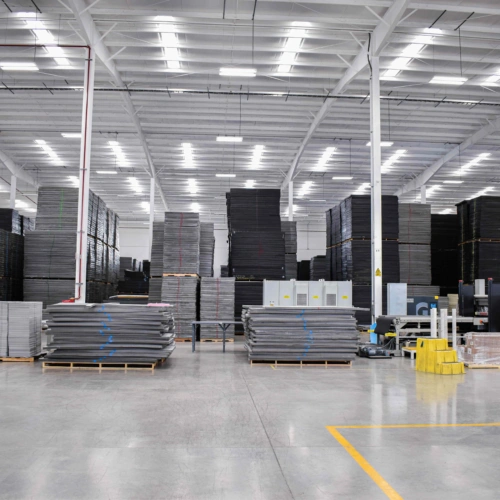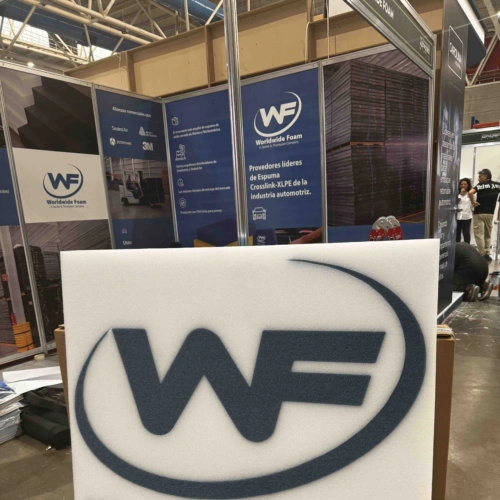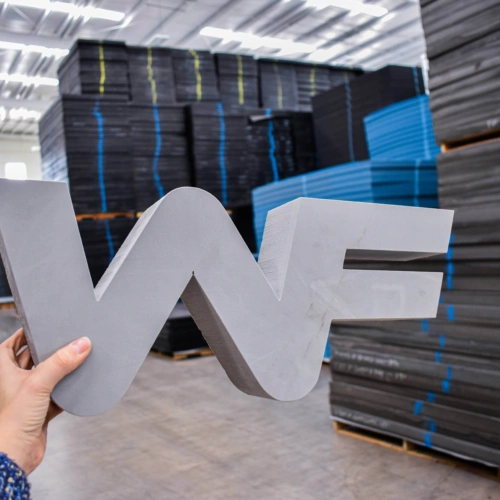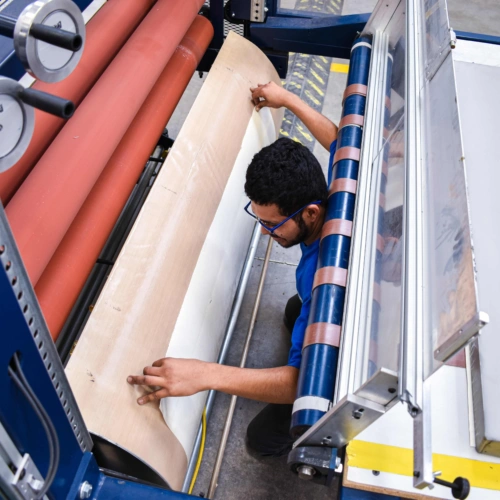| May 31, 2025
Get more out of your foam
When it comes to choosing the best polyethylene foam supplier, many companies focus solely on cost per board foot. While this is an important factor, at Worldwide Foam we believe there’s another equally critical element for achieving real savings and operational efficiency: maximizing material yield.
Efficient management of polyethylene foam—from selecting the right size to optimizing the cutting process—can result in significant cost savings and improved production performance. Here’s a short guide with two key strategies to help you get the most out of your foam: selecting the right material and utilizing automatic nesting.
What is polyethylene foam and why does its performance matter?
Polyethylene foam is a closed-cell material widely used in industrial applications, packaging, and protective solutions. Thanks to its structure, it provides strength, durability, flexibility, and excellent cushioning properties.
It’s also available in a variety of formats, thicknesses, and densities, making it adaptable to a wide range of needs. Optimizing foam performance means more than just reducing waste—it’s about choosing the ideal combination of format, density, thickness, and cutting technique. This approach can significantly improve your plant or workshop efficiency.
Choose the right size for your application
At Worldwide Foam, we offer polyethylene foam blocks in various sizes and densities so you can select the best fit for your production needs. We also provide an online tool that helps you perform a quick analysis to determine which size offers the best yield based on the parts you need to cut.
For example, if you need to cut 3” x 15” parts, you could achieve up to 6% more output by using a 60” x 96” block instead of the traditional 48” x 96” format. While that percentage may seem small, savings like these, repeated over many cuts, can have a significant impact on your overall operating costs.
Additionally, choosing the right density matters. Higher-density foams typically perform better in CNC cutting processes, reducing warping and shape distortion.
Get the most out of automatic nesting
One of the most effective ways to improve the yield of your closed-cell foam is by using automatic nesting in your CAD/CAM systems. This functionality allows you to arrange multiple shapes on a single foam sheet, maximizing every inch of material.
Advanced programs like SigmaNEST or IGEMS include automatic nesting features that not only reduce material waste but also optimize cutting paths and machine movements. These programs take into account variables like cutting direction, minimum part spacing, and sheet dimensions to boost overall process efficiency.
Using these tools also enhances cut quality and reduces the risk of errors, especially when working with various foam thicknesses or formats.
Other factors to consider
Thickness: Choosing the right thickness can reduce the number of cutting passes required, shortening production time.
High-precision CNC cutting: Using the proper tools for closed-cell foam ensures clean edges and minimizes waste.
Material planning: Proper batch planning improves block utilization and minimizes leftover pieces that can’t be easily reused.
Getting the most out of your polyethylene foam isn’t just about cost per square foot—it’s about smart material selection and processing strategies.
Choosing the correct block size, thickness, and density, along with implementing automatic nesting and using the right cutting tools, are essential steps to improving productivity, lowering costs, and maximizing every sheet of foam.
At Worldwide Foam, we’re committed to helping you achieve just that. Contact us for personalized support or try our performance tool to find the best option for your project.
Worldwide Foam

We are leaders in the supply of closed cell polyethylene foam in Mexico. We support various industries by offering a wide range of products and complementary services.










